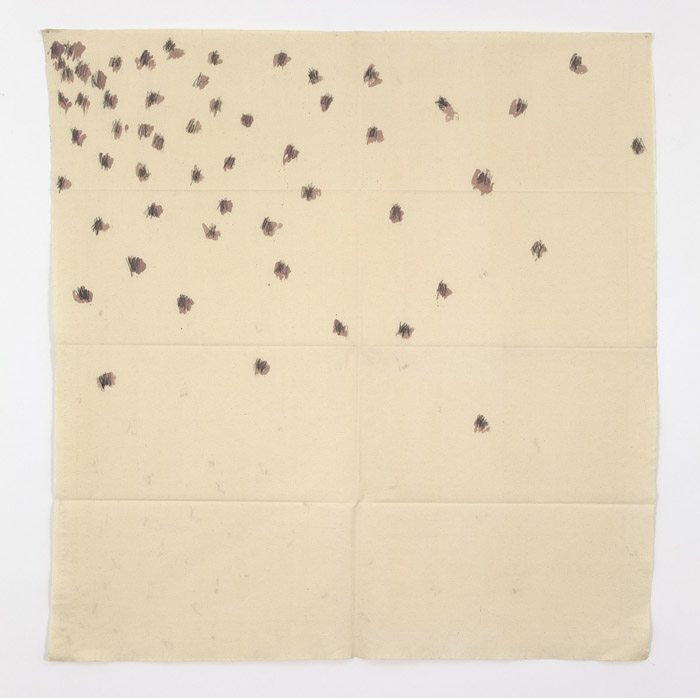Casey Kaplan


Review: Giorgio Griffa
Fragments
January 10–March 2
By Chris Sharp
“Fragments 1968–2012” traverses the past four decades of the Turin-based Italian artist Giorgio Griffa’s winsomely delicate production as a painter. And while changes in terms of content can be descried throughout the fifteen paintings on view, fundamental constants remain. To wit: a commitment to mark making on unprimed and unstretched canvases, whose sheetlike folds are as much a part of their composition as the texture of their weave are a part of their fabric. Deploying a bright and airy Matissean palette, Griffa’s marks, which vary from vertical and horizontal stripes to zigzags to numbers, are manually applied in a systematic mode from left to right, and there is often a signature caesura in the middle of the canvas, as if the artist were stopping a thought midsentence: Even Macchie (Stains), 1969, a personal favorite, which consists of a tumbling constellation of acrylic daubs overlaid with scribbled pastel, was executed from top left to right.
The writerly disposition of this work dovetails seamlessly with a compulsion to foreground materiality and process, which is characteristic of the deconstructive era from which it initially issued. Indeed, the formal similarities it shares with the Supports/Surfaces movement of the late 1960s and early 1970s in France are striking, but it seems blessedly unencumbered by the unwieldy Marxism that beleaguered and ultimately rent apart its French counterpart. Here a kind of pure painting thrives intact, evincing a discreet but tenacious fidelity to its most basic components: paint, canvas, and the human hand.